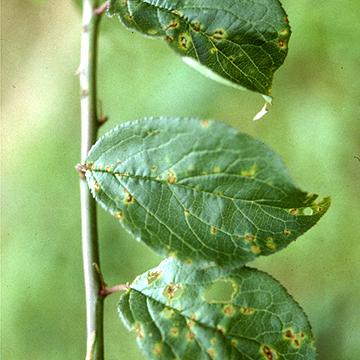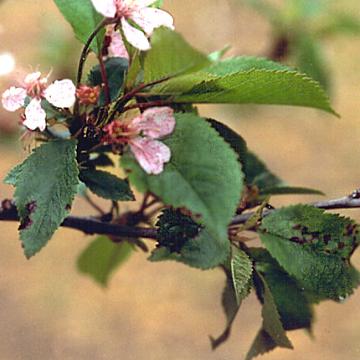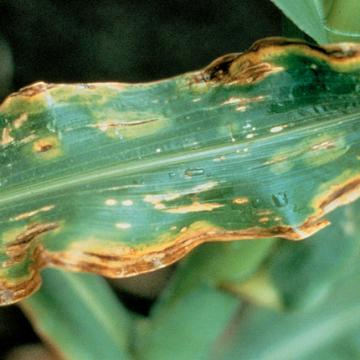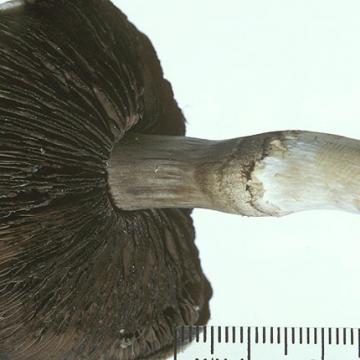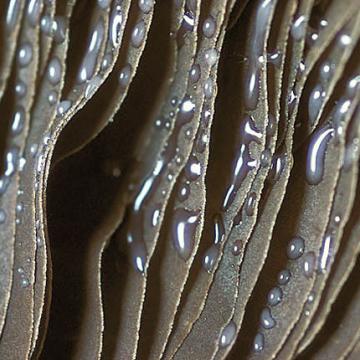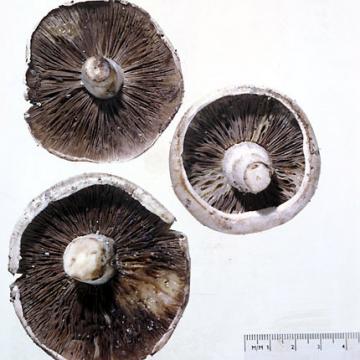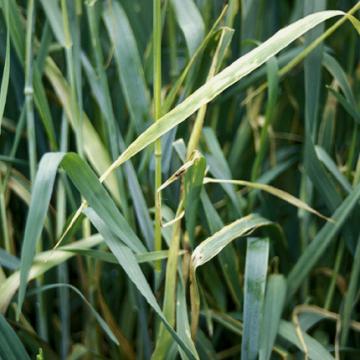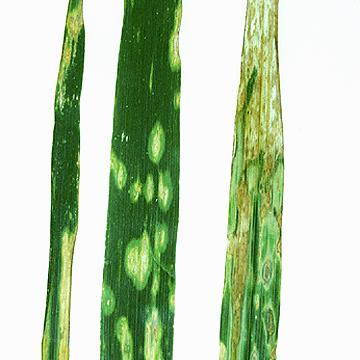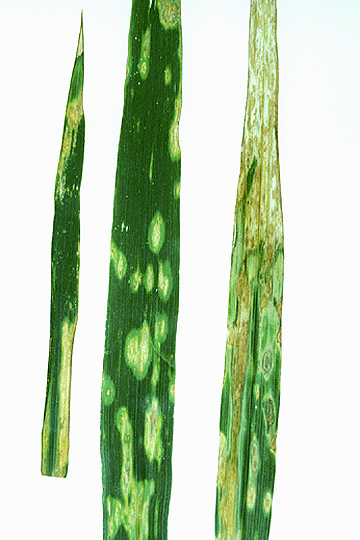DISEASE: Bacterial canker (Leaf spot)
HOST: Mume (Japanese apricot)
Leaves with spots surrounded by yellow halos.
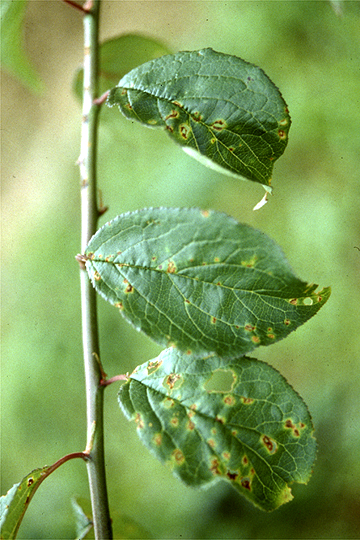
Bacterial canker (Leaf spot) | Mume (Japanese apricot)
DISEASE: Bacterial canker (Leaf spot)
HOST: Mume (Japanese apricot) (Prunus mume)
PATHOGEN: Pseudomonas syringae pv. morsprunorum
SOURCE: M. Goto
DISEASE: Bacterial canker
HOST: Cherry
Cherry with necrotic internal tissues and external symptoms of ooze (gummosis) caused by systemic infection.
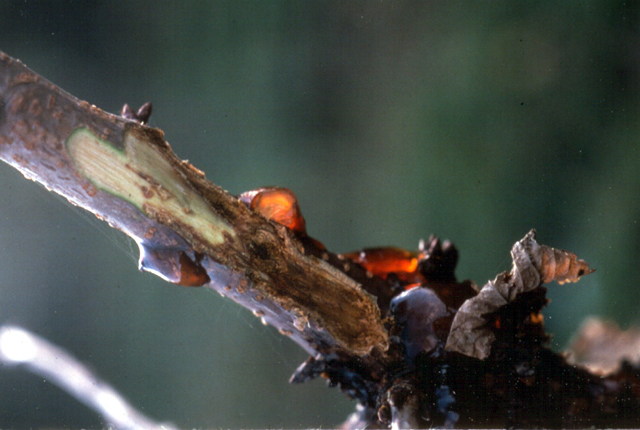
Bacterial canker | Cherry
DISEASE: Bacterial canker
HOST: Cherry (Prunus avium)
PATHOGEN: Pseudomonas syringae pv. morsprunorum
SOURCE: D. Funk, A. Alvarez
DISEASE: Bacterial canker
HOST: Cherry
Systemic infection of petioles and leaves.
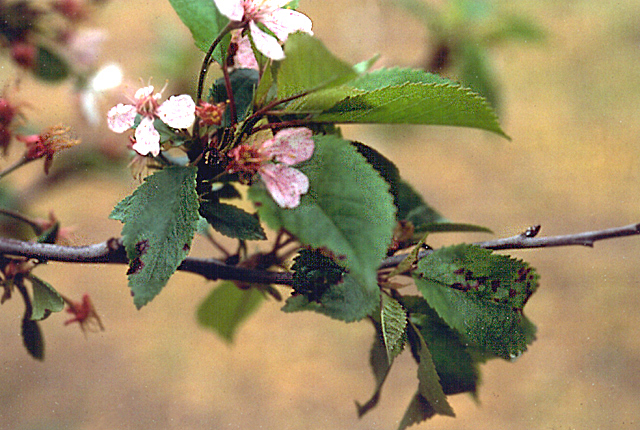
Bacterial canker | Cherry
DISEASE: Bacterial canker
HOST: Cherry (Prunus avium)
PATHOGEN: Pseudomonas syringae pv. morsprunorum
SOURCE: D. Funk, A. Alvarez
DISEASE: Chocolate spot
HOST: Corn (Maize)
Leaf with dark brown, elongated spots surrounded by broad, yellow halos.
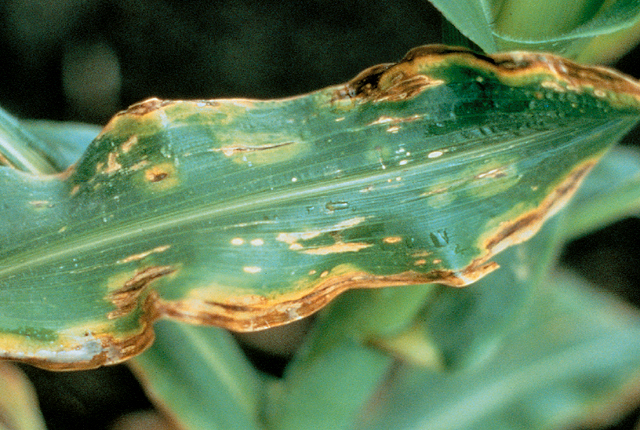
Chocolate spot | Corn (Maize)
DISEASE: Chocolate spot
HOST: Corn (Maize) (Zea mays)
PATHOGEN: Pseudomonas syringae pv. coronafaciens
SOURCE: D. White
DISEASE: Drippy gill
HOST: Mushroom
Drippy gill is characterized by small dark spots on gills with drops of bacterial ooze at the centers. Severe infection results in slimy areas and collapse of gills.
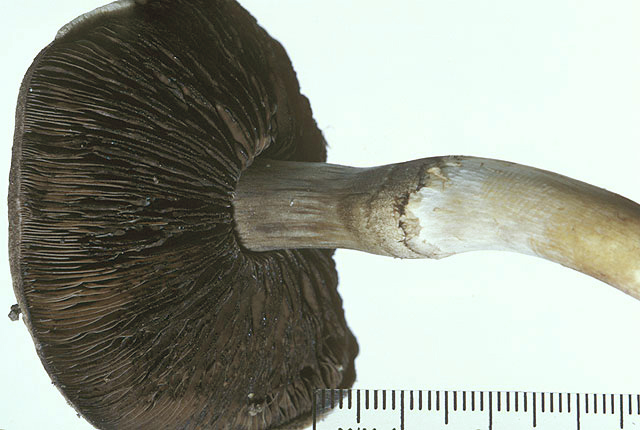
Drippy gill | Mushroom
DISEASE: Drippy gill
HOST: Mushroom (Agaricus campestris)
PATHOGEN: Pseudomonas agarici
SOURCE: J. Young
DISEASE: Drippy gill
HOST: Mushroom
Close-up of infected gills with bacterial ooze.
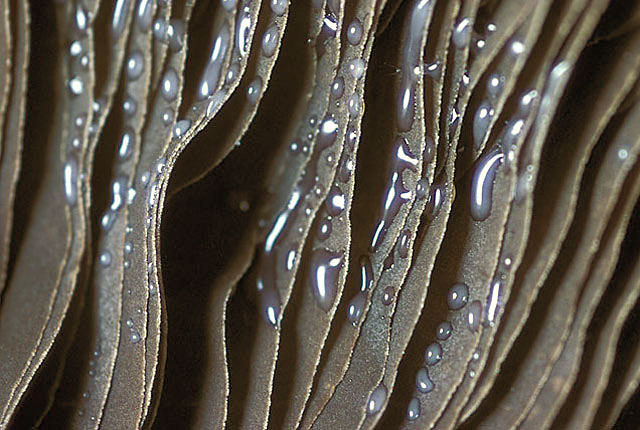
Drippy gill | Mushroom
DISEASE: Drippy gill
HOST: Mushroom (Agaricus campestris)
PATHOGEN: Pseudomonas agarici
SOURCE: J. Young
DISEASE: Drippy gill
HOST: Mushroom
Another view of small, dark spots on gills.
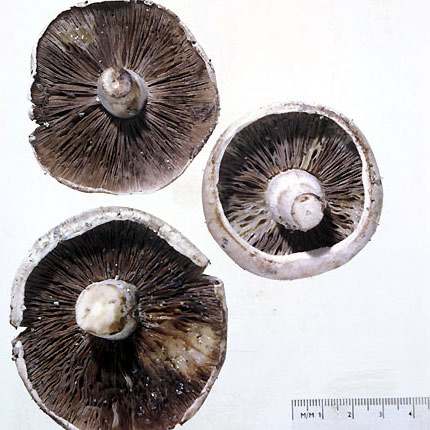
Drippy gill | Mushroom
DISEASE: Drippy gill
HOST: Mushroom (Agaricus campestris)
PATHOGEN: Pseudomonas agarici
SOURCE: J. Young
DISEASE: Halo blight
HOST: Oat
Oat leaves with oval lesions that darken in time and have distinctive yellow halos.
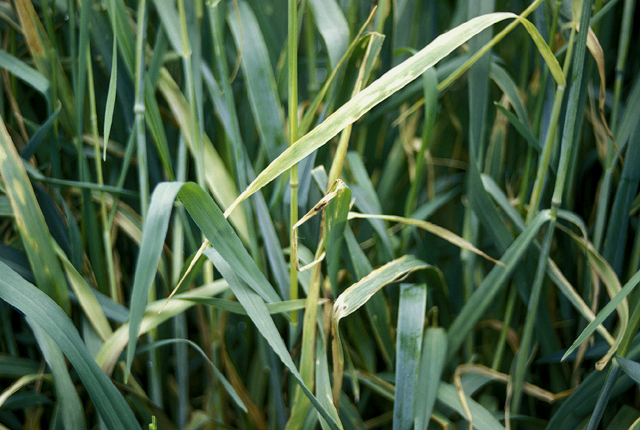
Halo blight | Oat
DISEASE: Halo blight
HOST: Oat (Avena sativa)
PATHOGEN: Pseudomonas syringae pv. coronafaciens
SOURCE: N. Schaad


